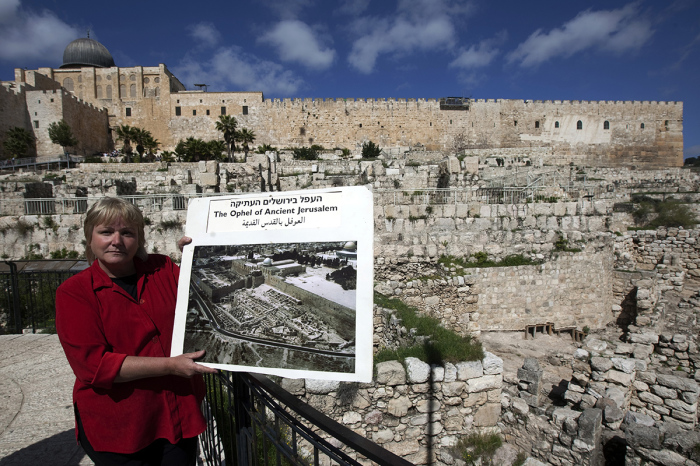Archaeologist known for using the Bible as her guide, unearthing King David’s palace, dies at 64

Eilat Mazar, one of Jerusalem’s foremost archaeologists who discovered King David’s palace in the City of David and once said, “I work with the Bible in one hand and the tools of excavation in the other,” has died at age of 64.
A field archaeologist, a scholar and a lecturer at the Hebrew University’s Institute of Archaeology in Jerusalem, Mazar is being remembered for her passion and compassion.
“Both as an archaeologist and a human being, she was deeply passionate and compassionate,” recalled Etgar Lefkovits, a journalist at The Jerusalem Post.
“A lover of history and archaeology and an ardent patriot, her face would shine with light and her eyes sparkle as she detailed centuries past, and did the work to connect the dots that is archaeology,” Lefkovits wrote.
Mazar’s discoveries include some of the earliest known artifacts in the ancient city, dating as far back as the 12th and 11th centuries BCE, and she saw them as scientifically excavated evidence of the biblical united monarchy, The Times of Israel reported.
At times, she would offer an interpretation that his academic colleagues disagreed with, especially the structure she excavated in 2005 in the City of David that is ascribed as King David’s palace.
“Strong like the bedrock she sifted through, she pushed ahead undeterred by her critiques, and buoyed by her spirit. She and history were intertwined as one,” according to Lefkovits.
“I work with the Bible in one hand and the tools of excavation in the other,” the journalist quoted Mazar as saying. “The Bible is the most important historical source and therefore deserves special attention.”
After discovering the City of David, Mazar also found sections of King Solomon’s walls, clay seals belonging to King Hezekiah and possibly Isaiah the prophet, Lefkovits added.
In 2018, Mazar wrote in an article in Biblical Archaeology Review titled, "Is This the Prophet Isaiah's Signature?" that that ancient Hebrew script found on a half-inch oval of clay, dating back to the eighth century B.C., could potentially have belonged to Isaiah the prophet.
The book of Isaiah in the Old Testament describes prophecies about the coming Messiah hundreds of years before Jesus Christ was born, with the Apostle Matthew quoting Isaiah later on in the New Testament when talking about John the Baptist's ministry.
The piece of clay, also called a bulla, was one of 34 of its kind originally found during the Ophel excavations at the southern wall of Jerusalem's Temple Mount in 2009. The seals were found in Iron Age garbage pits, originally located outside the wall.
As a child, Mazar would often accompany her grandfather, professor Benjamin Mazar, in his excavations of ancient Jerusalem, particularly in the City of David and in the Robinson’s Arch area near the Western Wall, according to The Times of Israel.
Mazar talked about the historicity of the biblical text being a blueprint for her academic archaeological excavation.
“One of the many things I learned from my grandfather was how to relate to the biblical text: Pore over it again and again, for it contains within it descriptions of genuine historical reality,” Mazar wrote in a 2006 Biblical Archaeology Review article. “It is not a simple matter to differentiate the layers of textual sources that have been piled one atop the other over generations; we don’t always have the tools to do it. But it is clear that concealed within the biblical text are grains of detailed historical truth.”





























